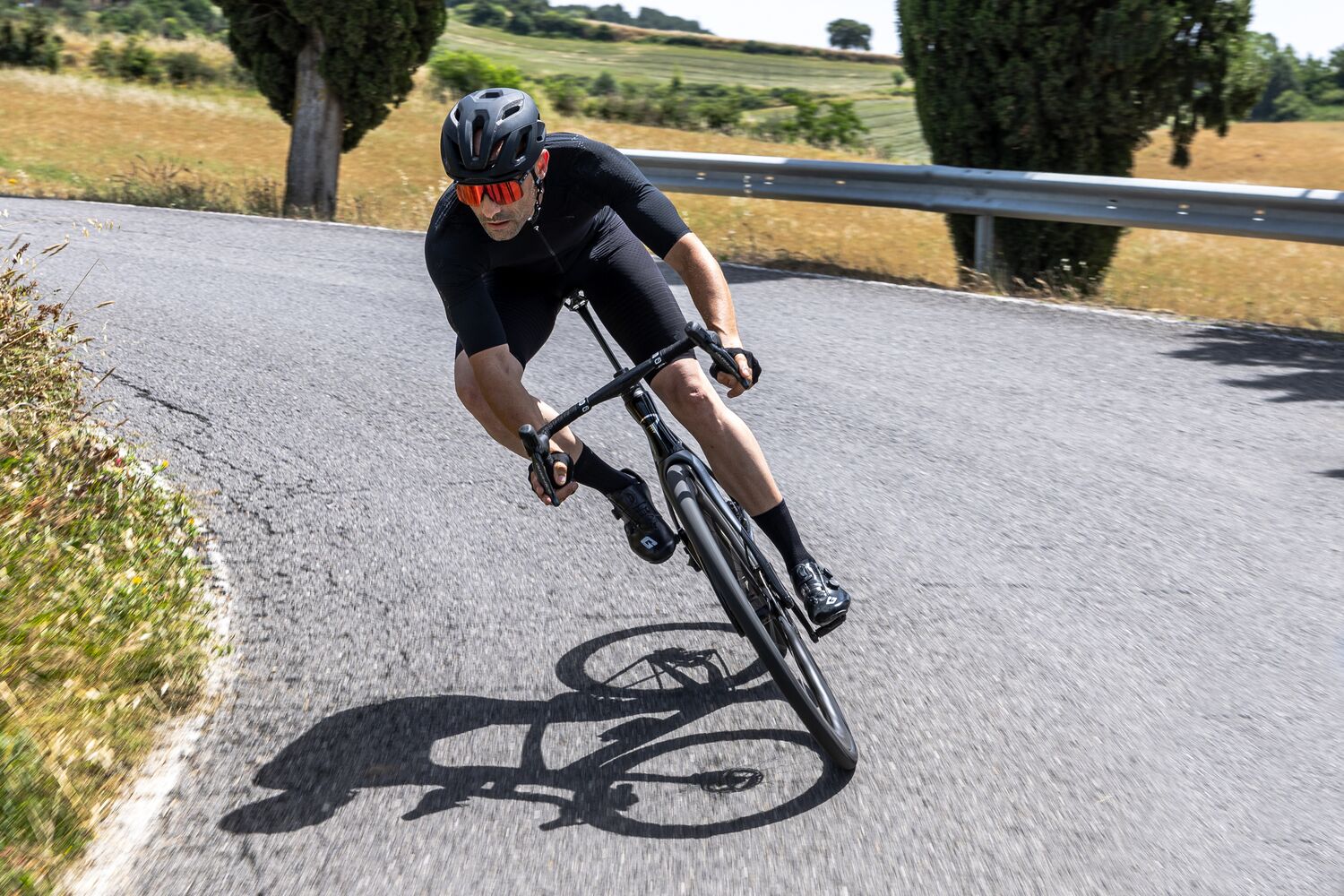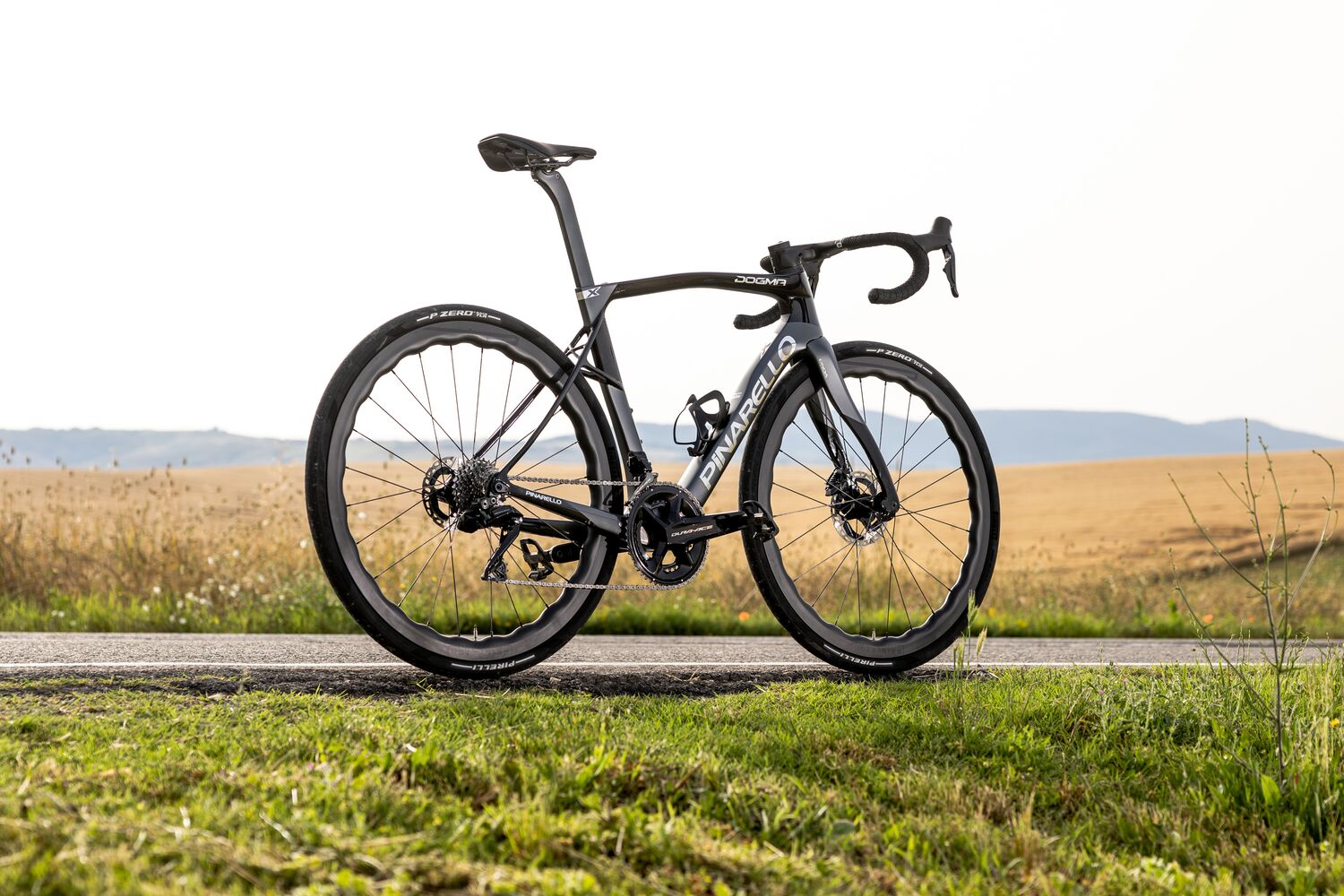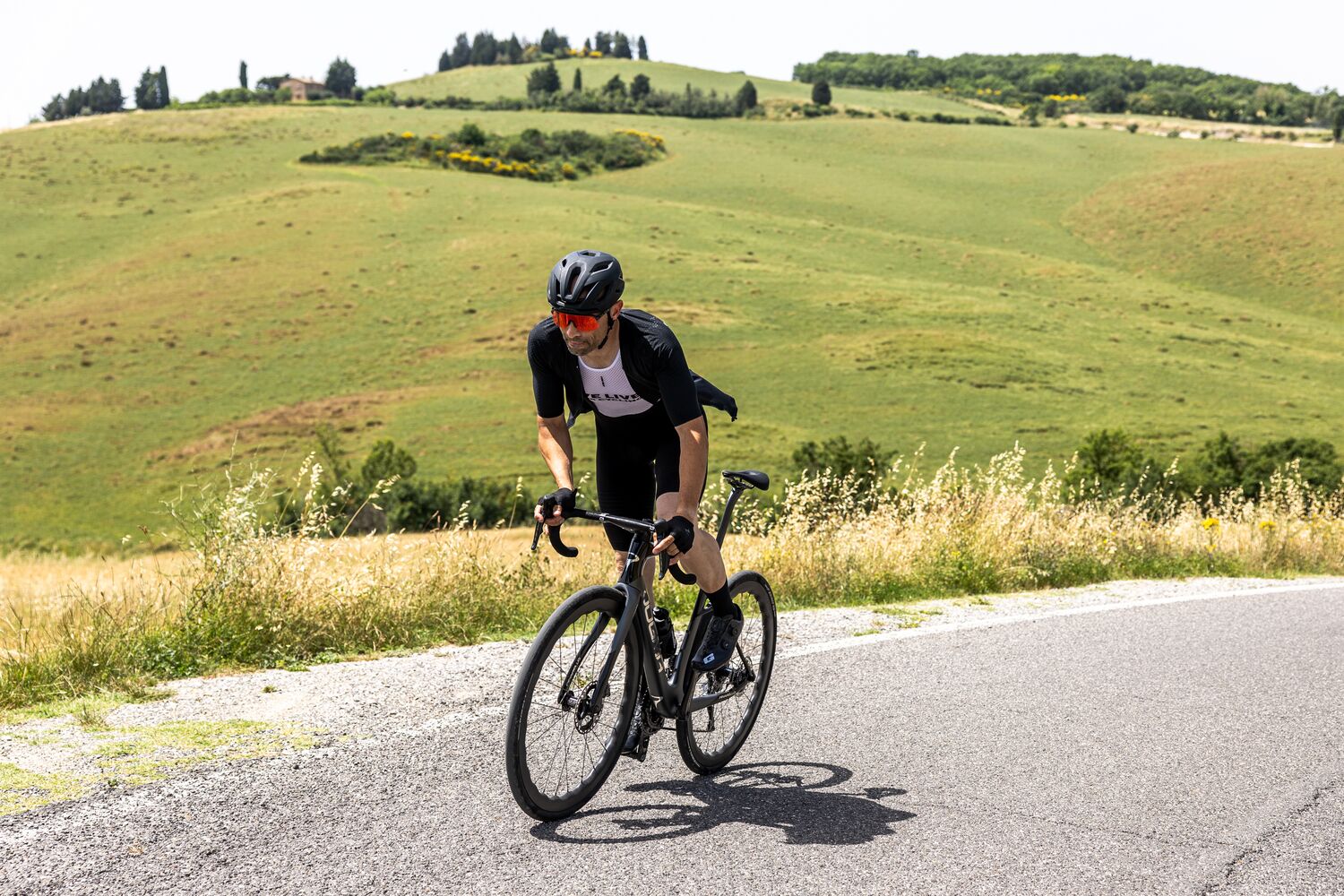
I’ve always coveted Pinarello’s Dogma ever since watching Bradley Wiggins, Chris Froome & Co. climbing podium after podium with Team Sky and Ineos Grenadiers thanks, in part, to their Dogma 65.1 Think 2s. Those early Dogmas were iconic machines, surreal Daliesque concoctions that looked like they’d been forged organically in the white heat of battle. What followed, of course, was an ambitious succession of race-bred refinements, culminating in Pinarello’s current masterpiece, the Dogma F. To a fanboy like me, it’s performance personified.
Which is exactly why I’ve never bought one. Yes, I’ve pressed my nose up against the cold, glass windows of countless high-end bike shops, fantasising about ownership, but I’ve never pulled the trigger.
You see, in real life, I value rides over races. The Dogma F is a race-winning bike but I’m no longer a race-winning kinda guy. Instead, I’m into long, fast days in the saddle, riding a bike that’s blessed with a good turn of speed, pin sharp handling and enough comfort to ensure I’m not cursing the last 10 miles. Which is where the Pinarello Dogma X comes in.

The Dogma X is Pinarello’s new baby, a bike that promises ‘the perfect balance of performance and ride comfort’. It certainly looks the part – gorgeously curvaceous like its race-focussed sibling, with the addition of that curious X-Stay atop the rear triangle. But is it just a softer Dogma F, or a valuable new addition in its own right? To find out, I sat down with Pinarello COO Maurizio Bellin and R&D Manager Massimo Poloniato.
“One word sums up the Dogma X,” nods a grinning Bellin. “Endurance. We put an enormous amount of effort into R&D, and over the last few years it’s become apparent that our customers want a performance-orientated endurance bike. One that’s fast, handles precisely but is comfortable to ride over long distances. But, up until now, the technology needed to build a bike we’re satisfied with just hasn’t been available.”
Our customers want a performance-orientated endurance bike. One that’s fast, handles precisely but is comfortable to ride over long distances.
Pinarello COO Maurizio Bellin
Other brands have, of course, introduced performance/endurance bikes for the gnarlier events on the calendar, but they rarely make the podium. In fact, it’s worth recalling that Strade Bianche was won on a Dogma F in 2023 (Tom Pidcock), as was Paris-Roubaix 2022 (Dylan van Baarle).
“You can add a complex suspension system, but they are heavy, potentially unreliable and rob a bike of the level of stiffness needed for performance,” says Poloniato. “Or you can make the frame more supple, but unless that’s done with great skill you risk reducing stiffness to a point where it adversely affects power. So, our goal was to add compliance without adding significant weight, complexity or losing stiffness.”

To achieve this, Poloniato and his team began by looking at tyres. “Achieving this performance/comfort dynamic was impossible just a few years ago, because it’s only recently that wider, tubeless tyres have gained acceptance with road riders,” says Poloniato.
“The Dogma X doesn’t just have clearance for 35mm tyres, the whole bike is optimised for 32-35mm tyres. We view them as an integral suspension component, which means that tyre width and volume is fundamental to the way the bike performs. We looked in detail at study after study and ran test after test. This width is absolutely optimal for the Dogma X because it promotes excellent rolling resistance, grip and comfort.”
The rear triangle is critical to the Dogma X because a common complaint on long rides is lower back pain, a discomfort we’ve set out to eliminate.
Pinarello COO Maurizio Bellin
The second element that Poloniato considered was geometry. While seat tube and head tube angles are very similar, the Dogma X has a slacker rake, shorter reach and a longer stack. Simplistically, this means the rider position will be taller and less stretched out than the Dogma F, making it a more composed ride, albeit at the slight expense of sharper handling. If we compare the numbers, in size 56 (560 in Pinarello speak) the Dogma X has a reach of 384.6mm vs 390.7 for the F, and a stack of 588.4 vs 570.2. The numbers aren’t huge but they’re enough to make a difference.
To accommodate those larger tyre sizes the Dogma X’s chainstays are 14mm longer than the F, which also adds stability and can help with dampening. However, the rear triangle can be a tricky area to tune.
“The rear triangle is critical to the Dogma X because a common complaint on long rides is lower back pain, a discomfort we’ve set out to eliminate,” says Bellin. “Uniquely for a performance bike, we’ve attached the seat stays to the seat tube at four points, for maximum compliance without compromising stiffness.”
“Rim brakes have probably had their day,” adds Poloniato, “but one feature I miss is the bridge between the seat stays. It’s not just there to mount a calliper, it can add rigidity too, so we’ve reintroduced the bridge in the shape of our characteristic X-Stays. This has enabled us to fine-tune the rear-triangle in a way that’s effective, light, simple and looks, well, very cool.”

By engineering a bike with more compliance, Poloniato and his team have built one better suited to today’s road surfaces too. I joke with Bellin about the dream-like surfaces found in continental Europe vs our appalling pothole-pocked roads in the UK. “It’s an interesting point,” says Bellin, “because surfaces are worsening all over Europe. Climate change is bringing heavier rainfall, so authorities are using open graded tarmac more often. This has chunkier aggregate, which enables water to drain more effectively, but it’s awful for road buzz. The Dogma X can handle light gravel but it’s also the perfect bike for less forgiving road surfaces.”
It turns out that the Dogma X is not simply just a more comfortable Dogma F, it’s a totally different animal. This is a true performance bike blessed with handling that flatters, a bike you can happily throw into corners with abandon, confident that it’s going to get you out of trouble. It’s a bike that’s smooth but rapid over any road surface, and some off-road surfaces too. It’s also a bike that’s equally as comfortable over 100 swift miles as it is on a two-hour coffee ‘n cake raid.
The Dogma X? It’s a smooth operator built purely for the joy of riding.
Visit pinarello.com for more information on the brand new Dogma X







